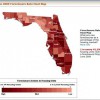At some point, most people are faced with the daunting task of delivering a presentation. These presentations could be required by job responsibilities, as an academic assignment, or in roles within the community. Presentations may be delivered to small or large audiences. Giving a presentation in front of an audience may be a frightening endeavor; however, this new 4-page publication of the UF/IFAS Department of Agricultural Education and Communication provides five steps to make the task of giving a presentation easier and ensure that your presentation will be effective. Written by Brianna Shanholtzer, Andrew C. Thoron, and J. C. Bunch.
https://edis.ifas.ufl.edu/wc337
Tag: Visual Aids
Do a Visual Presentation
 A visual presentation, either a demonstration or an illustrated talk, is a teaching method in which the presenter shares information with an audience with the assistance of visual aids such as posters, models, and computer presentation software. This 4-page fact sheet covers the method of delivery, the plan, the visuals, how to look sharp and to have a sharp presentation. Written by Stacey Ellison, and published by the UF Department of 4-H Youth Development, June 2015.
A visual presentation, either a demonstration or an illustrated talk, is a teaching method in which the presenter shares information with an audience with the assistance of visual aids such as posters, models, and computer presentation software. This 4-page fact sheet covers the method of delivery, the plan, the visuals, how to look sharp and to have a sharp presentation. Written by Stacey Ellison, and published by the UF Department of 4-H Youth Development, June 2015.
http://edis.ifas.ufl.edu/4h163
Visualizing Spatially Based Data for Various Stakeholder Audiences
 The work of Extension professionals is often to translate complex research findings into practical recommendations. One of the tools used for communicating with Extension audiences is visual representation of data. These visualizations include graphs, charts, and data overlaid onto maps. Just as text and words must be thoughtfully prepared for broad understanding, images should be adapted from the forms used with highly knowledgeable audiences. This 6-page fact sheet summarizes research in science communication and education that offers strategic ways for communicators to revise data visualizations for broad meaning-making. Written by Kathryn Stofer, and published by the UF Department of Agricultural Education and Communication, May 2014.
The work of Extension professionals is often to translate complex research findings into practical recommendations. One of the tools used for communicating with Extension audiences is visual representation of data. These visualizations include graphs, charts, and data overlaid onto maps. Just as text and words must be thoughtfully prepared for broad understanding, images should be adapted from the forms used with highly knowledgeable audiences. This 6-page fact sheet summarizes research in science communication and education that offers strategic ways for communicators to revise data visualizations for broad meaning-making. Written by Kathryn Stofer, and published by the UF Department of Agricultural Education and Communication, May 2014.
http://edis.ifas.ufl.edu/wc163
WC104 Projected Materials
WC104, a 4-page illustrated fact sheet by Ricky Telg, discusses the application of visual communications principles to the development of effective projected materials (computer-generated slide presentations). Published as the fourth of a four-part series by the UF Department of Agricultural Education and Communication, September 2010.
http://edis.ifas.ufl.edu/wc104
WC101 Visual Communication
WC101, a 5-page illustrated fact sheet by Ricky Telg, focuses on the foundations of visual communications. Published as the first of a four-part series by the UF Department of Agricultural Education and Communication, September 2010.
http://edis.ifas.ufl.edu/wc101
WC103 Exhibits and Displays
WC103, a 5-page illustrated fact sheet by Ricky Telg, discusses the application of visual communications principles to the development of effective exhibits and displays. Published as the third of a four-part series by the UF Department of Agricultural Education and Communication, September 2010.
http://edis.ifas.ufl.edu/wc103
WC102 Posters and Fliers
WC102, a 4-page illustrated fact sheet by Ricky Telg, discusses the application of visual communications principles to the development of effective posters and fliers. Published as the second of a four-part series by the UF Department of Agricultural Education and Communication, September 2010.
http://edis.ifas.ufl.edu/wc102
FE713/FE713 Business Retention and Expansion (BRE) Programs: Making Your (Power) Point
FE713, a 4-page fact sheet by Henry M. Cothran, is part of the Business Retention and Expansion Programs series. It provides an overview and a set of guidelines for developing effective visual presentations that won’t leave your audience snoring or lost. Includes references. Published by the UF Department of Food and Resource Economics, June 2008.
http://edis.ifas.ufl.edu/FE713
